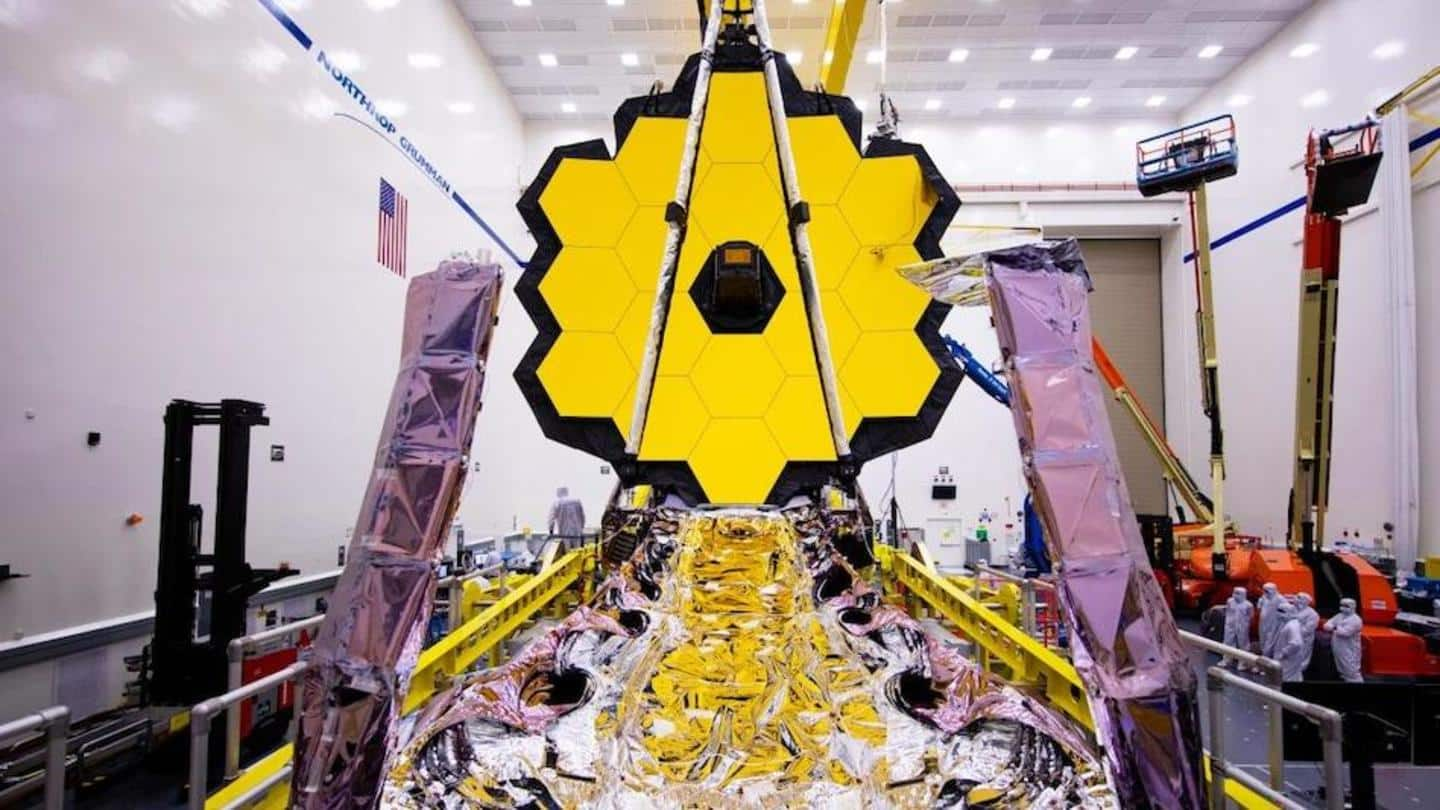
NASA's $10bn James Webb Space Telescope lifts off
What's the story
The James Webb Space Telescope on Saturday embarked on its ambitious mission into space.
The world's largest and most powerful infrared telescope, its aim is to examine the first stars and galaxies and look for signs of life.
It has been developed by the United States' National Aeronautics and Space Administration (NASA) in collaboration with the European and Canadian space agencies.
Details
Launched from French Guiana
The observatory, built at an estimated $10 billion, was launched through an Ariane 5 rocket from the European Space Agency's launch base in French Guiana.
Named after a former NASA director, it is a successor to the Hubble telescope launched some three decades ago.
The launch was earlier scheduled for December 24 but a prediction of high-level winds at the spaceport forced its postponement.
Quote
'An extraordinary mission'
"James Webb begins a voyage back to the birth of the universe," NASA spokesman Rob Navias said as the rocket left the Earth.
Agency administrator Bill Nelson said, "Webb is an extraordinary mission."
"It's a shining example of what we can accomplish when we dream big. We've always known that this project would be a risky endeavor," he said before the lift-off.
Features
JWST to travel over a million kilometers
The JWST has a 6.5-meter-wide golden mirror—almost three times wider than the primary reflector used on Hubble.
The telescope, in its entirety, is so large it had to be folded to fit into the rocket.
It is expected to travel 15 lakh kilometers or 9,30,000 miles away from Earth in a month's time.
It is designed to last up to 10 years.
Goals
Key goals of JWST
A major target of the JWST is to examine the first stars that ended the darkness believed to have gripped the universe after the Big Bang billions of years back.
It is also aimed at probing the atmospheres of distant planets thus helping researchers decide whether they are habitable in any way.
It is likely to officially enter service in June 2022.